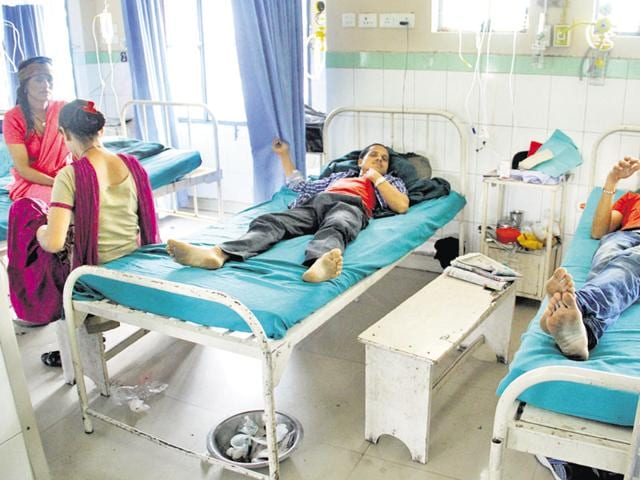Odisha incidents remind us that State expenditure on health needs to improve
The percentage figure on healthcare expenditure goes up as one goes down the income level, pushing crores of people below the poverty line each year
On two consecutive days, two pictures from Odisha brought home the pitiable state of public health in India and the inhumanity that results from this. On Wednesday a tribal in Kalahandi district, Dana Majhi, had to carry his dead wife on his shoulders for about 12 km because the district hospital would not give him a mortuary van. The second picture came the very next day when hospital workers in Balasore district had to break the bones of a dead woman and sling her on a bamboo pole, much in the way dead animals are carried, so that the body could be taken to a community centre.

All these bring to mind the incident of Laxmichandra Rout and his wife Babita, the migrant couple from Odisha who committed suicide after their son died of dengue last year. Newspaper reports say the Odisha chief minister has launched a free ambulance/hearse scheme for 30 district hospitals. This is as usual too little, too late.
Read | Doctor on call: Using text messages to improve public health in India
But there is no point blaming just a chief minister. The main point is to recognise that there is a severe decline in the expenditure on public health. At the beginning of the Eleventh Plan period, that is 2007 to 2012, the public expenditure on health was a measly 0.9% of GDP. Projected to grow to 2% by the end of the Plan period, the target fell badly short . And in this, the share of the Union ministry of health and family welfare was just 0.27% of GDP in 2013-‘14.
Community health centres, which are meant to provide specialised treatment to patients, have seen a remarkable drop in the number of specialists such as gynaecologists and obstetricians. Back-of-the-envelope calculations suggest the drop has been almost 30% for the country as a whole.
Read | Infant mortality has economic consequences
According to the ministry data, while Odisha needs about 1,500 specialists at its community health centres, the state has fewer than 350. The state has a shortfall in the number of primary health centres and sub-centres also. Another attendant problem is that the amount allocated for the health sector, under the National Health Mission, is not utilised fully. And as regards whatever little is used, the quality of expenditure is questionable.
Read | Need for a robust steel framework for health in India
Close to 75% of the expenditure on health comes from the corporate sector. And if one takes the country as a whole, again close to 75% of the health care costs are paid by the patients themselves. On average, about 10% of family expenditure is on account of health reasons alone. The percentage figure goes up as one goes down the income level, pushing crores of people below the poverty line each year.
Given this state of affairs, it is not surprising that Majhi had to carry his wife on his shoulders because the district hospital cannot afford a hearse. Even if the World Health Organization’s prescriptive public expenditure figure of 5% of GDP cannot be met now, we could do better to raise it to 2% at least.
@uddalokbhattach





